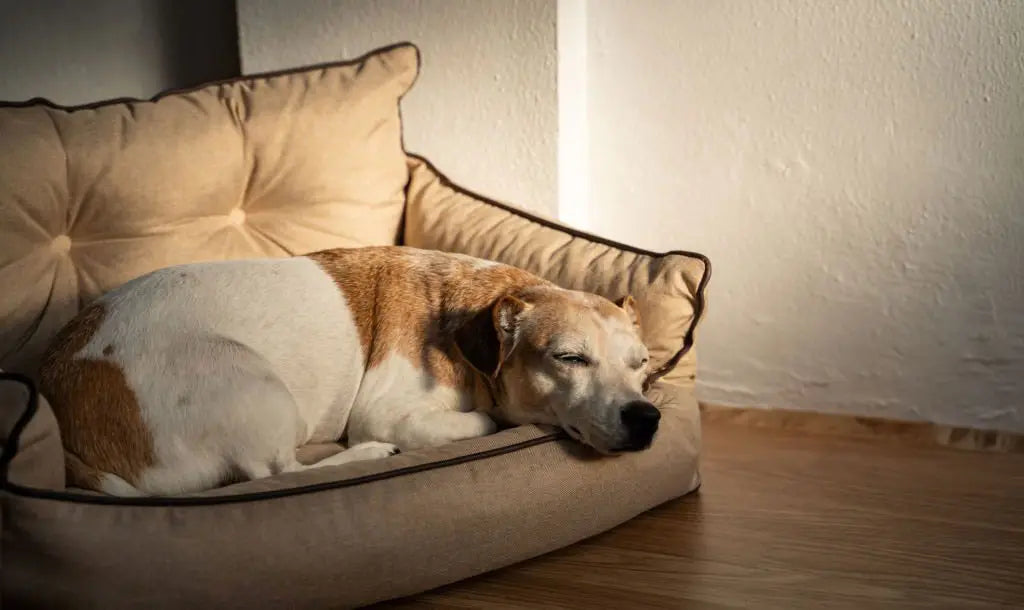Imagine your dog’s belly ballooning in just minutes; this is GDV, a terrifying twist on ordinary “bloat.” One minute your pup seems fine; the next, life-threatening shock can hit. Without emergency surgery, GDV is often fatal.
What Is GDV — and How Is It Worse Than Simple Bloat?
The term “bloat” sometimes just refers to gas buildup (gastric dilatation). But GDV is a far scarier scenario: not only does the stomach fill with gas, but it also twists, cutting off blood flow and wreaking havoc on internal organs, quickly.
Who’s at Greatest Risk?
Large, deep-chested breeds are top of the list; especially older dogs or those with a family history of GDV. Commonly affected breeds include Great Danes, Dobermans, Irish Setters, Weimaraners, Standard Poodles, Saint Bernards that top the list, but many other large breed dogs can be victims. Neutered male dogs have a slightly higher risk than females, and dogs with anxious or fearful temperaments are more prone, too.
What Raises the Odds?
Research shows that GDV-prone breeds that gobble food quickly or swallow a lot of air while eating can have an increased risk if fed from raised feeding bowls1, or eat once a day2. I feed Homer, my slow-eating terrier (not a high-risk breed), once daily to create a “feeding window” of calories that stimulates autophagy (cellular detoxification), which comes with a cascade of other beneficial health outcomes, including lower incidence of GI, dental, orthopedic, kidney/urinary, and liver/pancreas disorders3, but always from a porcelain slow-feeder bowl. If I owned a higher risk breed, I would split daily calories into two meals, 6-8 hours apart, which still allows for ample time to “rest and digest” (and cellularly repair the body).
In one study, Great Danes fed home-prepared meals with larger sized meat chunks (>30mm) had a lower bloat risk than dogs fed canned/pureed food or smaller-sized kibble pieces4.A 2006 study found dogs eating ultra-processed kibble with oils listed among the first four ingredients also increased the risk. There’s no good reason to over supplement seed oils to pets (other than the small amounts necessary to meet alpha linolenic acid, ALA, nutrient requirements in homemade diets), and they certainly shouldn’t appear among the first four ingredients of any thoughtfully formulated pet food.
Dogs that swallow objects they shouldn’t — known as gastric foreign bodies — face a dramatically higher risk of developing gastric dilatation-volvulus (GDV). In fact, studies show that large-breed dogs with a history of ingesting foreign objects are up to five times more likely to experience this life-threatening condition5,6.
Subtle Signs — Act Fast!
Early symptoms are sneaky: restlessness, drooling, lip licking, stretching, faint panting, and abdominal discomfort (inability to get comfortable or refusing to lay down). If your dog has recently eaten and then begins to act strange, bloat should automatically be top of mind. When the stomach twists, it traps gas completely, so your dog can’t belch or vomit, a clear emergency. Within 20 minutes to an hour, blood flow is compromised, shock sets in, toxins flare up; and every second counts.
Emergency Response: What Happens Next?
Go to the vet immediately. Time is the most critical factor. Older studies suggest that around 30% to 40% of dogs with bloat either die or must be euthanized. More recent research indicates that survival rates have improved with advances in veterinary medicine and pet parents being aware of the symptoms and acting faster. For example, a 2017 study using data from veterinary emergency clinics found a survival rate of up to 80% for dogs who undergo surgery soon after symptoms are noticed.
Factors That Impact Survival
A dog's prognosis depends heavily on how quickly they receive care and the severity of the condition at the time of treatment. Key factors that worsen the prognosis include:
- Delayed treatment: A significant delay, especially if clinical signs are present for more than six hours before the dog is examined, dramatically increases the mortality risk.
- Gastric necrosis: If blood flow to the stomach has been cut off for too long, part of the stomach wall can die. When this happens, the survival rate decreases significantly, with some estimates around 50%.
- Complications during treatment: Prognosis is worse for dogs that require additional procedures, such as removal of the spleen (splenectomy) or a portion of the stomach (gastrectomy).
- Heart arrhythmias: Many dogs with GDV develop abnormal heart rhythms. These arrhythmias can be fatal and must be carefully monitored and treated.
- Pre-existing conditions: Some dogs are euthanized without treatment due to poor prognosis or cost of care, which also contributes to overall mortality rates.
The vet will stabilize your dog with IV fluids, oxygen, and X-rays. Surgery is not always successful, but it’s the only option for saving your dog’s life if the stomach has flipped. Major abdominal surgery is performed to untwist the stomach and tack it to the body wall (gastropexy), preventing future episodes. Damaged tissue (and sometimes the spleen) may be removed if the blood supply has been compromised. Antibiotics, heart monitoring, and electrolyte correction may follow. Post-surgery, your pup needs rest, bland food, gentle hydration (I love bone broth), microbiome restoration, and possibly acupuncture and laser therapy to aid healing and reduce the massive, acute inflammatory response.
Prevention: Be Proactive
Feed several meals within your dog’s eating window, rather than one big dinner, for high-risk breeds. Use slow-feed bowls to reduce the gulping of food and air during meals. If you have a multi-dog household, slow down the pace of swallowing food by feeding dogs alone, in different rooms. If you can’t separate dogs during mealtimes, feed them as far apart as possible, with bowls placed up against different walls (so they’re not looking at each other while eating, which can reduce food competition, gulping and air swallowing).
Avoid exercise and large drinks of water right before or after eating. Consider laparoscopic gastropexy surgery in high-risk breeds with high-risk behaviors; it lowers recurrence from over 54.5% down to 4.3%7, especially if you intend to feed primarily dry food.
My Best Advice
Switch your pup to a meat-based, low starch, fresher food diet, if possible. The only cases of bloat I’ve seen in the last 28+ years as a vet have been in dogs eating dry foods (or mostly kibble). The high-heat extrusion process that creates those crunchy, expanded morsels also creates incredibly high amounts of unwanted chemical tag-alongs called Advanced Glycation End products (AGEs) that cause internal havoc, including profound gastrointestinal inflammation8.
My Next Best Advice
Add a broad-spectrum digestive enzyme powder to every meal. Including a source of amylase, lipase and protease to assist in the digestion and assimilation of carbs, fats and proteins will reduce common symptoms of digestive stress, including gas and bloating.
Focus on intentionally reducing anxiety and stress in your dog’s life and home environment. Give your pup plenty of adequate daily exercise (but not for an hour after eating), opportunities to sniff, explore, play and engage in mentally stimulating activities. Address any behavior concerns or triggers as soon as you recognize them with a fear-free trainer who can give you the tools you need to keep your pup’s stress hormones in check.
In Summary
GDV is not your average tummy upset; it’s a hidden killer that strikes fast. Watch for early warning signs, know the risk factors, proactively reduce your dog’s odds for GDV with preventive strategies and move quickly if you suspect GDV. Your timely action can save their life.





